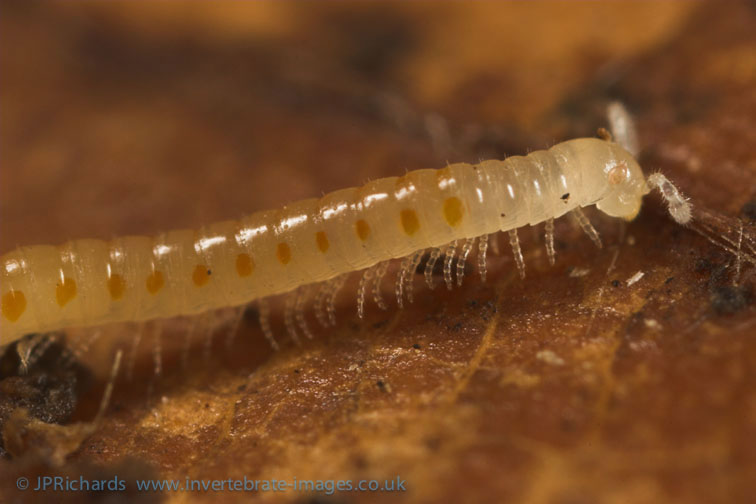Boreoiulus tenuis (Bigler, 1913)
Status:
GB IUCN status: Least Concern
ID Difficulty
Identification
Blaniulid millipedes are conspicuously long and slender. This is one of two blind (i.e. lacking eyes) Blanulids with orange (not scarlet) ozadenes. It is relatively smaller and with noticeably shorter body setae than Archiboreoiulus pallidus. Identification is best undertaken by examination of male gonopods.
Distribution
This species is widespread in Britain and Ireland but there is a surprising paucity of records from southern England and Wales. Although the clusters of records in certain areas clearly originate from active field workers there are equally active recorders in areas where the species has never been recorded.
It is a central European species occurring as far eastwards as Lithuania but only just reaching the north and east of France. It has a distinct northern bias to its distribution as it occurs in southern Scandinavia but not in Austria, the Czech Republic, Slovakia or anywhere further south (Kime, 1999).
Habitat
Blower (1985) recognised B. tenuis as a species of arable fields and it may become a pest in sugar beet (Baker, 1974). Kime (2004) considered the species highly synanthropic and analysis of the recording scheme habitat data supports this. A strong association with cultivated land and particularly with synanthropic sites including gardens and churchyards is apparent. Blower (1985) also stated that this species is associated particularly with woodland and with base-rich soils. However, although 30% of records of this species are from woodland, the habitat data provides no evidence of an association with either woodland or with calcareous soils.
Phenology
Adults have been found throughout the year but most frequently in the spring. As with other blaniulids, surface activity is likely to be determined by temperature and soil moisture. Surprisingly, Gregory and Campbell (1996) noted that, in Oxfordshire, the species appears to be easier to find during winter (by searching beneath refuges of deeply embedded stones and dead wood).
This species account is based on Lee (2006).
Links
MilliBase - Global catalogue of Millipedes: https://millibase.org/aphia.php?p=taxdetails&id=945120









